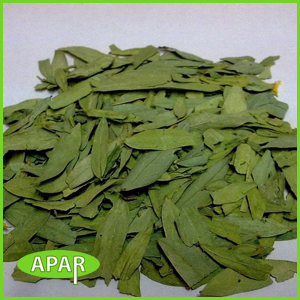SENNA LEAVES
Senna is an Arabian name, and the drug was first brought into use by the Arabian physicians Serapion and Mesue, and Achiarius was the first of the Greeks to notice it. He recommends not the leaves but the fruit, and Mesue also prefers the pods to the leaves, thinking them more powerful, though they are actually less so, but they do not cause griping. Cassia senna is native to tropical Africa and cultivated in Egypt and the Sudan and elsewhere; Cassia angustifolia is native to India and cultivated mainly in India and Pakistan. People in northern Africa and southwestern Asia have used senna as a laxative for centuries. It was considered a “cleansing” herb because of its cathartic effect. In addition, the leaves were sometimes made into a paste and applied to various skin diseases. Senna includes herbs, shrubs, and trees. The leaves are pinnate with opposite paired leaflets. The inflorescences are racemes at the ends of branches or emerging from the leaf axils. The flower has five sepals and five usually yellow petals. There are ten straight stamens. The stamens may be different sizes, and some are staminodes. The fruit is a legume pod containing several seeds.

